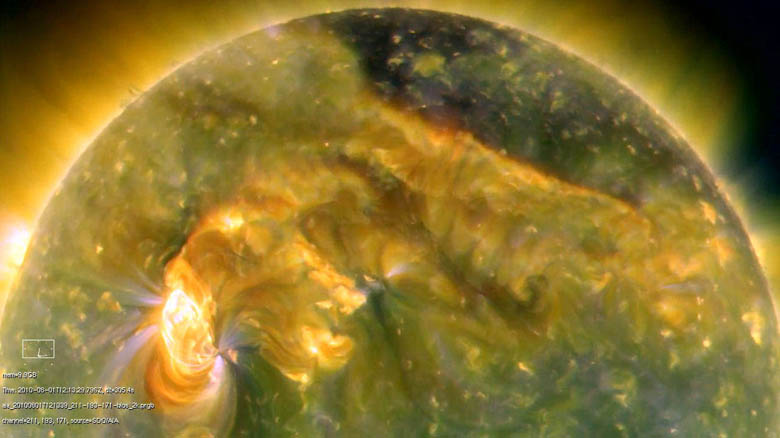 |
Solar
Storm & Colliding Galaxies |
 |
Solar
Storm & Colliding Galaxies |
Solar
Storm - Sunday 1st August 2010
Submitted
by Peter Struve 6 August 2010 |
 Sunday's solar storm taken by the SDS satellite |
| Colliding Galaxies |
 |
| :HST:
NASA/ESA This
is a Hubble Space Telescope image of a pair of colliding galaxies called the Antenna
Galaxies. As the stars make up a tiny part of the volume of a galaxy there will
be very few stellar collisions. But the dust and gas clouds are compressed to
trigger a massive burst of star formation uualy in gian star clusters. The ultraviolet
light from the very hottest stars excites the hydrogen gas to emit the hydrogen
alpha line in the red part of the spectrum giving rise to what are called HII
regions as they contain ionised hydrogen - that is hydrogen nuclei (protons) that
have lost their electron. These are very prominent in the image. Submitted by Robin Wilkey 7 August 2010 |